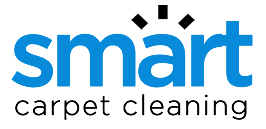How To Clean Your Own Carpets
Step-by-Step Guide to Cleaning Dirty Carpet
Carpets can take a real beating with daily foot traffic, spills, pet accidents, and more, no matter the type. While regular vacuuming helps, after a while your carpets are bound to need a deeper clean. Hiring professional carpet cleaning service can get expensive though. Luckily, with some basic supplies and a bit of elbow grease, you can clean your carpets yourself!
Materials You’ll Need
- Carpet cleaner solution, carpet shampoo, detergent, or soap
- Water
- Cleaning machine (canister vacuum cleaner, shampooer, or steam cleaner)
- Spray bottle
- Soft bristle scrub brush
- Clean white cloth
Prep Your Carpet
Before scrubbing away, you’ll want to do some prep work to make cleaning easier. Start by thoroughly vacuuming the area to pick up dust, dirt, urine, debris, and loosen ground-in grime. For really dirty high-traffic areas, vacuum a few times.
Next, do a spot treatment on any tough stains. Using a bit of cleaning solution or a mixture of white vinegar and baking soda, gently scrub the stained areas to aid in stain removal and lift the discoloration. Let it soak for 5-10 minutes before blotting with a towel. This pre-treats the carpet stains so they’re easier to remove when shampooing.
Finally, check the manufacturer’s instructions for your cleaning machine and prep it for use. Attach any accessories, fill the tanks, etc.
Deep Clean
Now comes the fun part—deep cleaning your carpets! Work in manageable sections for the best results. Here is a step-by-step process:
- Using your machine, apply the carpet cleaning solutions evenly across the section following manufacturer’s directions. For stubborn stains and high-traffic areas, use a bit more carpet cleaners or go over them a few more times.
- Let the solution sit for 5-10 minutes. This dwell time allows it to break down loose dirt and stain before scrubbing.
- Scrub the entire carpet area with a soft bristle scrub brush. Apply elbow grease to really work the solution deep into the carpet fibers and loosen grime.
- Extract the dirty solution with your equipment. Make several passes to remove as much liquid as possible.
- Use clean towels to soak up any excess moisture. Press firmly and avoid rubbing for best results. Speed drying is key to prevent mold or mildew. You may need quite a few towels!
- Allow the carpet section to fully dry before walking on it. Once dry, vacuum again to lift flattened pile.
Repeat the process on any remaining sections until the entire room is clean!
Pro Tip: For best results, consider shampooing your carpets every 6 months or so to freshen them and prolong their life. Doing it 1-2 times per year keeps them looking fresh!
Maintaining Carpet Cleanliness
While a good deep clean works wonders, you’ll need to take some steps to keep your carpeting in good condition day-to-day:
- Vacuum frequently—at least weekly for high-traffic areas or homes with pets
- Immediately blot spills
- Clean pet accidents ASAP to avoid staining and lingering odor
- Consider a no-shoes rule in the house to minimize soil being ground in
- Rotate area rugs to reduce uneven wear patterns from furniture
- Send out truly stained rugs for professional cleaning every year or two
Regular maintenance goes a long way between professional carpet cleanings!
To clean carpets on your own takes some work but saves on hiring a service. With the right machine and techniques, you can tackle even a dirty rug. Just break up the work into manageable sections, use your muscle power scrubbing, and properly extract and dry for best results. Your carpeted floor or upholstery will look almost brand new again!


